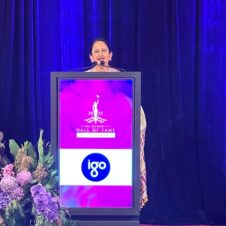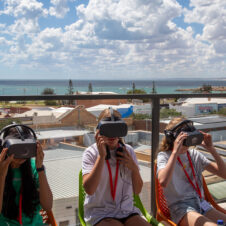Two and a half thousand people gathered in a stadium & spilled out onto an oval, united in their love of all things space & astronomy, to attend Astrofest 2018 on 24th March.
Astrofest is an annual astronomy festival of epic proportions held at Curtin Stadium, in Perth WA. With the support of the local astronomy community and hundreds of volunteers, Astrofest is an engaging celebration of Western Australian astronomy and stargazing.
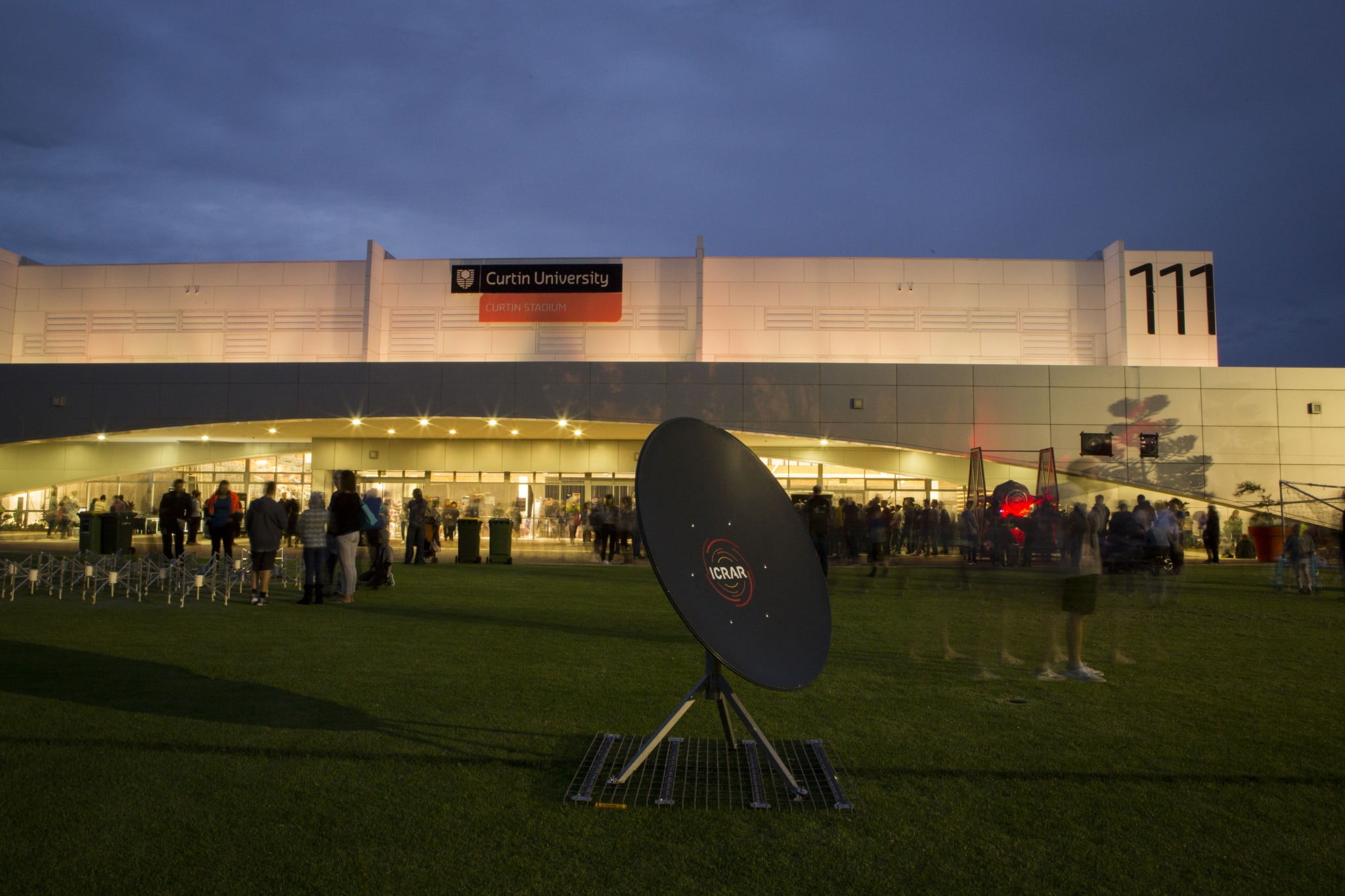
Astrofest at Curtin Stadium, 24th March 2018.
There was plenty to keep the visitors engaged:
- A Welcome to Country ceremony by Noongar Elder Shaun Nannup;
- Prize giveaways;
- More than 40 optical telescopes out on the oval;
- Radio telescopes operating until sunset;
- More than 20 stalls from the astronomy community offering interactive activities and giveaways;
- An entire Murchison Widefield Array tile;
- 3D printed Murchison Radio-astronomy Observatory telescope models;
- Virtual Reality experience on the International Space Station;
- Space dome shows;
- Hardcore Science Zone and Prestige Science Zone with serious science talks from astronomers;
- Costumed characters from sci-fi movies;
- Science shows;
- Astrophotography exhibition; and
- A competition to win a telescope.
Despite the entire event being clouded out, visitors said that their favourite thing were the night sky telescopes, even though they weren’t able to see the sky with them!
What was new this year?
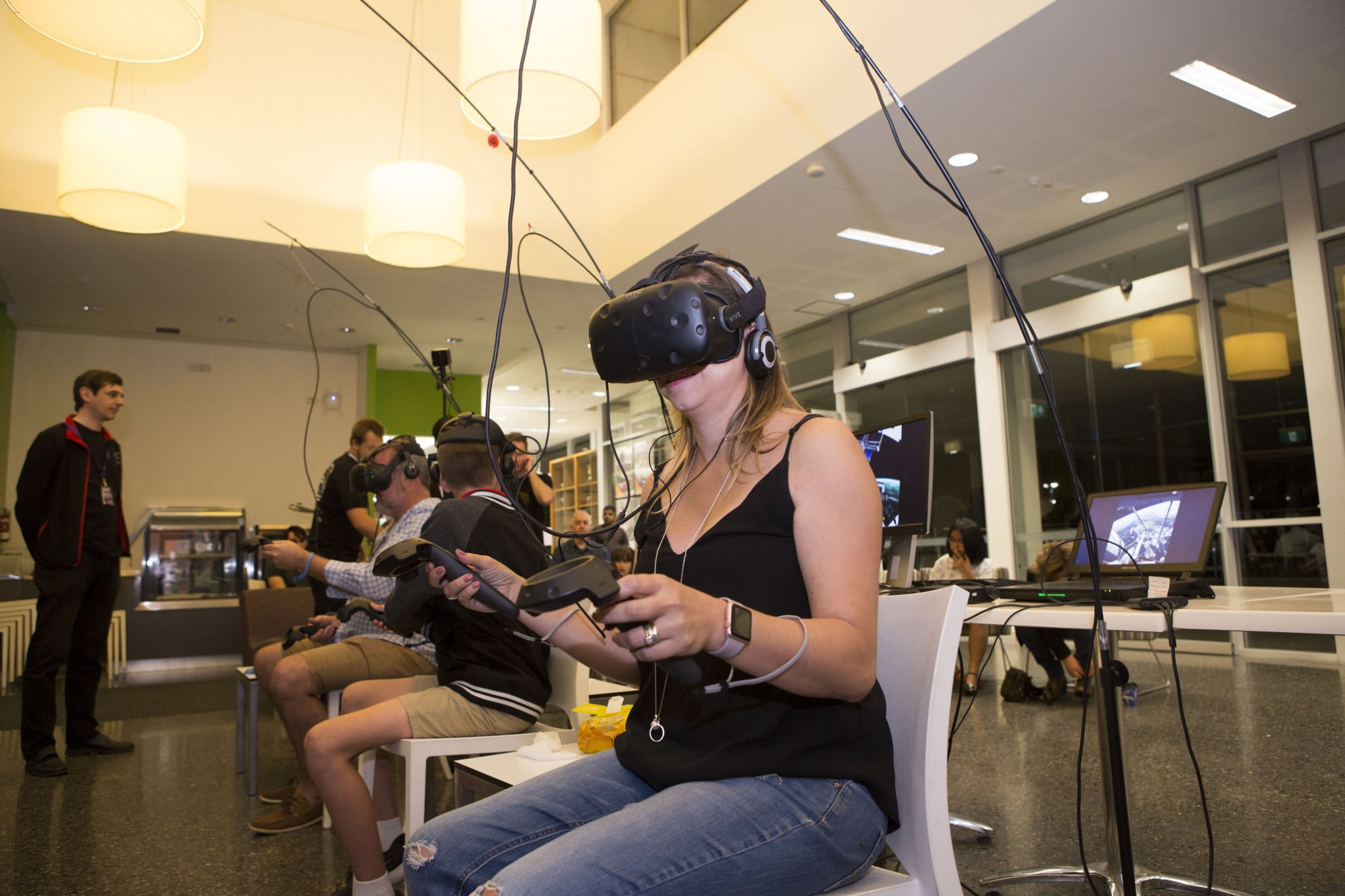
Virtual Reality experience on the International Space Station at Astrofest 2018.
This year, a new Virtual Reality zone was introduced, utilising the skills and technology of a local game developer studio, Stirfire. They ran three headset units to give visitors an experience of Earthlight: Spacewalk. Built in collaboration with NASA, the game gives players an authentic experience of space, immersing them in the tasks performed on the ISS, hundreds of kilometres above Earth. Approximately 60 people were able to complete the 10-minute experience over the course of Astrofest.
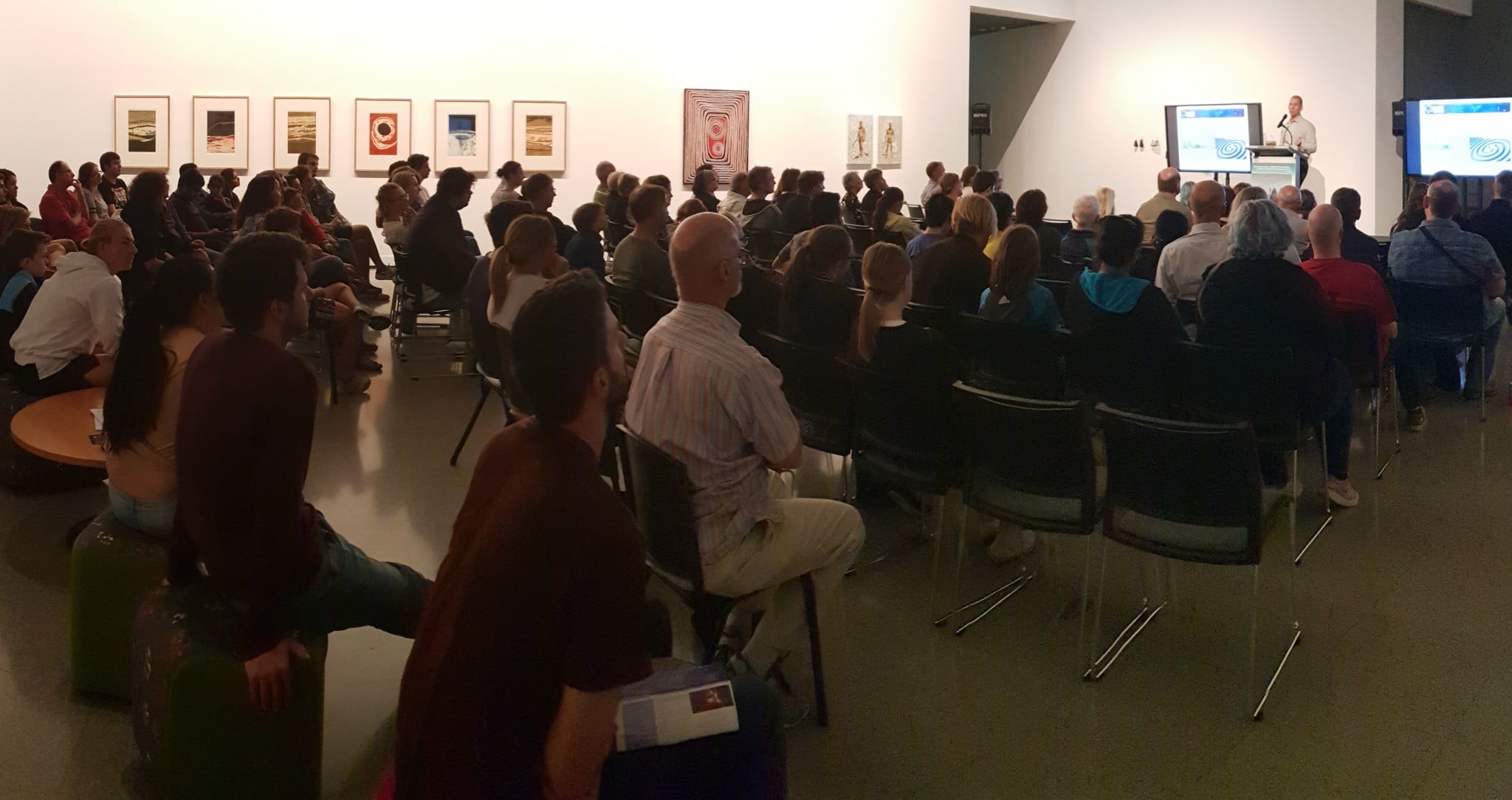
ICRAR’s Professor Steven Tingay gives a talk at the Prestige Science zone.
Also new this year was a collaboration with the John Curtin Gallery as the Prestige Science Zone. This was based on the success of last year’s ‘Hardcore Science Zone’, which was so popular that we received complaints from people not able to get inside. The new Prestige Science zone was home to three 45 minute presentations by ICRAR and CSIRO researchers, aimed at adults interested in astronomy. After the talks, visitors were invited into the gallery where they could view the current science-themed exhibition, Lisa Reihana: Emissaries.
Both the Hardcore and Prestige Science zones—both with capacity for 100 people—saw full house audiences for almost every talk. Over the course of the night, there were seven well-received talks with one commenter on Twitter remarked that her daughter wants to be an astrophysicist and was “… over the Moon when she saw women speakers because she knows that someday it could be her”.
What was most popular at Astrofest?
The most popular parts of Astrofest this year were the telescopes, science shows, and the astrophotography exhibition. Visitors were able to get up close and personal with the telescopes, and chat with astronomers about their research and what they like about the night sky—even though it rained twice and we didn’t see a single star all night. Scitech’s science shows were popular with families and children of all ages. The 1,000 seater stadium was almost full for both of their shows.

One of many telescopes at Astrofest 2018.
The astrophotography exhibition has been a part of Astrofest since its inception in 2009, and is always popular. This year there were 224 entries by 52 entrants, with judges whittling this down to just 40 photos & time lapse sequences—including astro-landscapes, high resolution planetary images, lunar and solar eclipses, and deep space images. On the night, more than 140 people voted for their favourite image and the whole exhibition will now tour Western Australia.
What’s next?
You know your event is a success when 98.82% of survey respondents indicate we should definitely hold another Astrofest and next year will be our 10th anniversary Astrofest Extravaganza!
